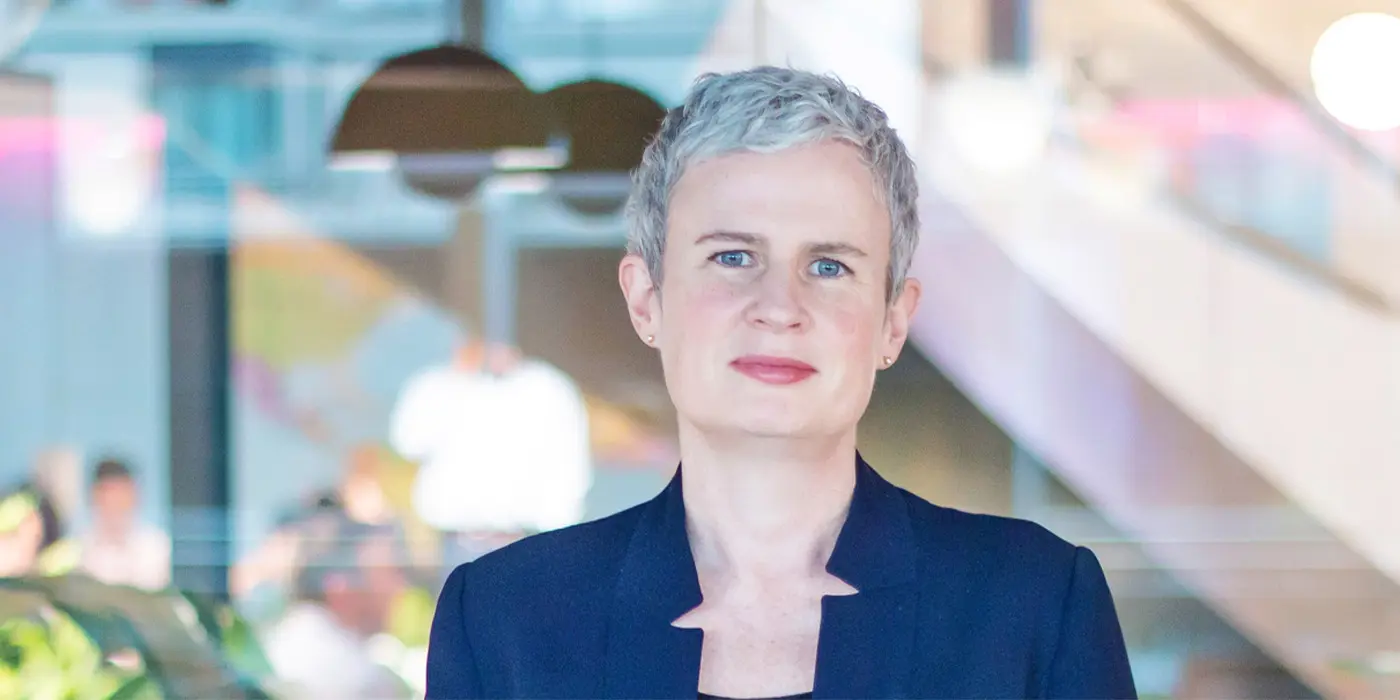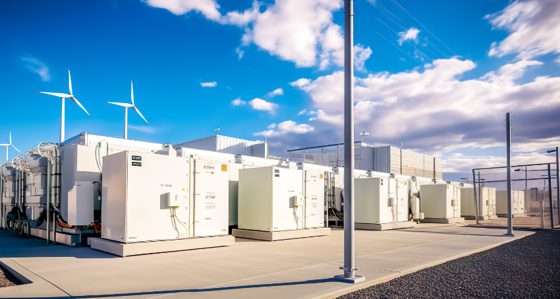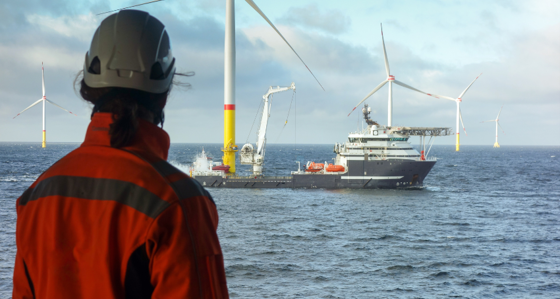
Bending the technology cost curve: How energy companies can optimise IT spend to power innovation, value and growth
8 min read 10 July 2025
IT spend is rising across sectors, and energy is no exception. Gartner estimates global IT spending in the power and utilities market to increase by 10.3% in 2025 to reach over $252 billion. This growth isn’t slowing down either, with total IT spend expected to exceed $340 billion by 2028.
Energy companies aren’t just spending more on IT. The fundamental dynamics of that spend are also shifting. New delivery models have profoundly changed the way that businesses consume and pay for IT resources. With the rise of cloud computing and as-a-service models, IT costs have shifted from large, upfront capital expenditures to ongoing operating expenditures. Organisations now pay for specific resources like compute instances, storage volumes, and managed services on a pay-per-use basis. Pricing structures are also evolving beyond traditional per-seat licensing models to consumption-based approaches where customers pay for actual resource consumption—such as compute hours, storage per gigabyte, data transfer, API calls per thousand, or AI model tokens processed. This shift enables more flexible scaling but requires new approaches to cost management and forecasting.
This dual pressure of growing and increasingly variable IT spend is putting technology investments under greater scrutiny. Executives, boards, and shareholders are increasingly demanding greater accountability and ROI from tech spend. They want assurance that IT investments aren’t just keeping the lights on, but are actively contributing to business value and competitive advantage.
Technology must get commercial
The challenge is that most IT functions aren’t equipped to deliver on these new demands. While technology has made huge advances, energy firms’ understanding of underlying tech economics and financial modelling hasn’t kept pace. This disconnect is becoming a growing liability in a world where more companies are now choosing to ‘rent’ IT services, rather than build these capabilities in-house.
A rigorous 'bottom up and top down' approach to platform and cloud economics is essential for success. While many organisations invest significant effort in securing competitive initial deals with service providers, they often lack the commercial rigor to manage ongoing consumption effectively. This can lead to costs that quickly spiral out of control. Having guided numerous large scale organisations through both initial negotiations and renewal cycles using detailed consumption analysis, we've seen first-hand how this gap between deal-making and day-to-day management creates substantial financial exposure. The growth in new consumption-based AI tools is also contributing to this shift, which will only accelerate as enterprises scale their use of AI-based tooling and face the opportunities Agentic AI may present. Today's subscription and consumption-based models demand a fundamentally different approach – a techno-commercial mindset that goes beyond traditional IT service management or IT procurement.
A joined-up approach with Procurement and co-ownership of cost and value across the supplier lifecycle is critical – value is gained and lost right from initial POCs and architectural decisions through the traditional ‘buying’ cycle through to vendor and consumption management. Procurement teams need to move from historical approaches of renegotiating at the time of renewal to building long term leverage, gathering and intervening based on market intelligence, and acting at the optimum time for their organisation – not playing into the vendor’s hands with last minute tactical negotiations.
It’s no longer enough for IT functions to simply deploy applications and maintain architecture. They must also carefully manage the underlying economics of these systems. This requires new skills in platform economics, commercial structures, and value optimisation. Without these capabilities, firms risk overspending on maintenance activity rather than prioritising investments that create true business value.
Navigating shifting spend dynamics with the right expertise
The evolution toward variable, consumption-based tech spending represents a major shift in how IT creates and delivers value. Successfully managing this transition demands more than one-off cost-cutting exercises. It requires strategic effort to bend the cost curve – driving sustained savings and reshaping how the entire organisation approaches cost management.
The complexity of this transformation also means that energy companies need partners who understand both the technical intricacies and commercial realities of modern IT spending. At Baringa, we've developed deep expertise in helping companies across the energy value chain master this evolution. We focus on building sustainable capabilities that enable long-term efficiency, commercial intensity, robust FinOps practices, strategic application rationalisation, and centralised IT functions that support broader business transformation and value creation.
The following client examples illustrate how we put this philosophy into practice, through tailored approaches that address the unique challenges each organisation faces in their journey towards more commercial, value-driven IT management.
Helping oil and gas make the shift to IT Consumption Management
An oil and gas major was facing spiralling SaaS, cloud and data costs and growing risk from vendor lock-in. 3rd party IT spend was nearing $1bn, with the business increasingly reliant on critical cloud and SaaS platforms. They came to Baringa with a pressing question – how do we deliver digital transformation at scale while optimising our commercial position?
We worked alongside the client’s architecture, procurement, and vendor management teams and technology leadership to establish a long-term digital cost optimisation strategy. We started by assessing opportunity against Baringa’s IT commercial framework and identifying key pain points, including a maturing FinOps and software asset management (SAM) capability, opaque consumption trends, inconsistent vendor commercial treatments, weak commercial governance, and critical forecasting process gaps. We then created a five-year roadmap to help the client arrest rising IT costs and build the muscle to support an efficient consumption-based model that lays the groundwork for broader adoption of consumption-based Agentic AI services.
Together with our client, we built a prioritised vendor segmentation model, defined high-risk lock-in areas, and explored options to modernise infrastructure while embedding cost governance. We introduced new ways of thinking about enterprise-scale cloud economics, focusing on trade-offs between reservation commitments and flexibility, as well as mechanisms to attribute SaaS and IaaS spend to business outcomes.
The results were transformational. The client stood up an IT Consumption Management capability, launched a proof-of-concept with industrial-grade cost management tooling, and developed a segmented playbook to renegotiate supplier contracts with an eye toward flexibility, long-term viability, and lower TCO. A dual-vendor strategy for cloud, underpinned by more disciplined forecasting and consumption modelling, created a credible path to sustained savings and commercial leverage in future vendor negotiations.
Divestiture as the catalyst for mining cost reinvention
When a global mining giant decided to divest a major part of their business, they faced a critical challenge – reducing costs without compromising future growth potential. The company had a target budget in mind, but lacked clarity on implementation details and optimisation opportunities across their complex IT landscape.
Baringa was brought on board to identify what parts of the IT estate should leave with the divestment and to optimise the parts that remained behind, helping the client to rationalise their application landscape and identify opportunities for wider operating model and service desk efficiencies.
We began with a rapid assessment of the client’s current cost base and headcount, creating a comprehensive methodology that linked the budget to over 100 applications across key capability areas including front office, finance, risk, and data management. Next, we followed a staged approach to evaluate different thematic categories ranging from complete divestments to architectural options and efficiency improvements across infrastructure and licensing agreements. By engaging directly with IT heads across functions, we aligned cost-reduction initiatives with business outcomes and functional requirements.
Ultimately, we identified opportunities to cut the company’s cloud spend by 30% and IT support tickets by 50%. Beyond these immediate savings, our team provided a clear vision for the future IT organisation, including a detailed org chart and operating model options – setting the stage for long-term efficiency and value creation.
It’s time to rethink the economics of IT
For energy companies, achieving techno-commercial excellence is an ongoing journey that must constantly evolve amidst rapidly changing technology and market dynamics. It demands intentional architecture decisions, forward-looking vendor strategies, and precise alignment between technology spend and business value creation.
The path ahead requires sustained commitment, but companies that embrace this approach will be the ones best positioned to achieve sustained value and stronger competitiveness in energy’s digital future.
At Baringa, our proven approach to cost optimisation delivers the clarity and focus that energy companies need to unlock greater efficiency and value from IT. Whether you’re bending the IT spend curve or retooling IT to deliver business growth, get in touch with Orla Keady, Jamie Ogilvie-Smals or Sean Egan to learn how we can help you shape more sustainable IT spending practices.
Our Experts


Related Insights

From Pilots to Portfolios: Scaling the Rollout of Utility Microgrids
Across the U.S., utilities are under pressure to deliver reliable, affordable energy in the face of rising risks and shifting policies. Download our research to see how scaling microgrids can help meet that challenge.
Read more
Unlocking the North Sea’s future potential with digital and AI
The North Sea is ready for its next chapter - powered by AI and digital innovation. Discover how this energy giant can be transformed into a low-carbon leader while boosting efficiency, investment, and resilience.
Read more
Safeguarding critical energy infrastructure against converging cyber and physical threats
UK energy utilities strengthen their resilience against emerging cyber-physical threats by developing a holistic security methodology that bridges digital and physical domains.
Read more
Vom Commodity-Anbieter zum intelligenten Dienstleister: Wie Energieversorger mit KI den Kundenservice transformieren
Die Rolle von Künstlicher Intelligenz im Wandel der Energiebranche
Read moreIs digital and AI delivering what your business needs?
Digital and AI can solve your toughest challenges and elevate your business performance. But success isn’t always straightforward. Where can you unlock opportunity? And what does it take to set the foundation for lasting success?